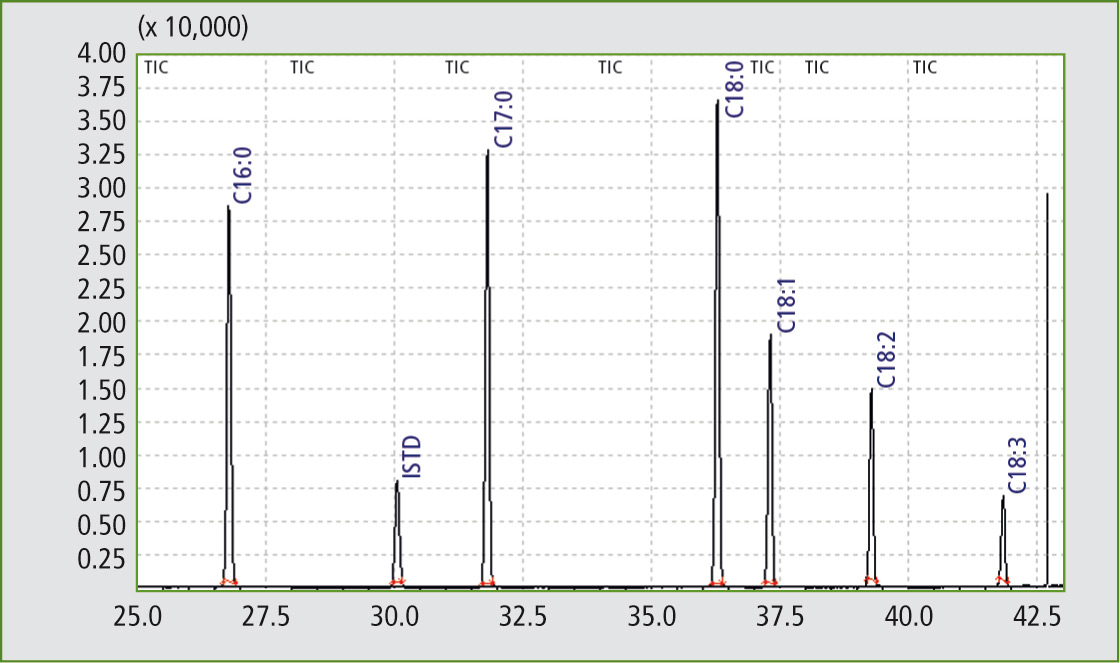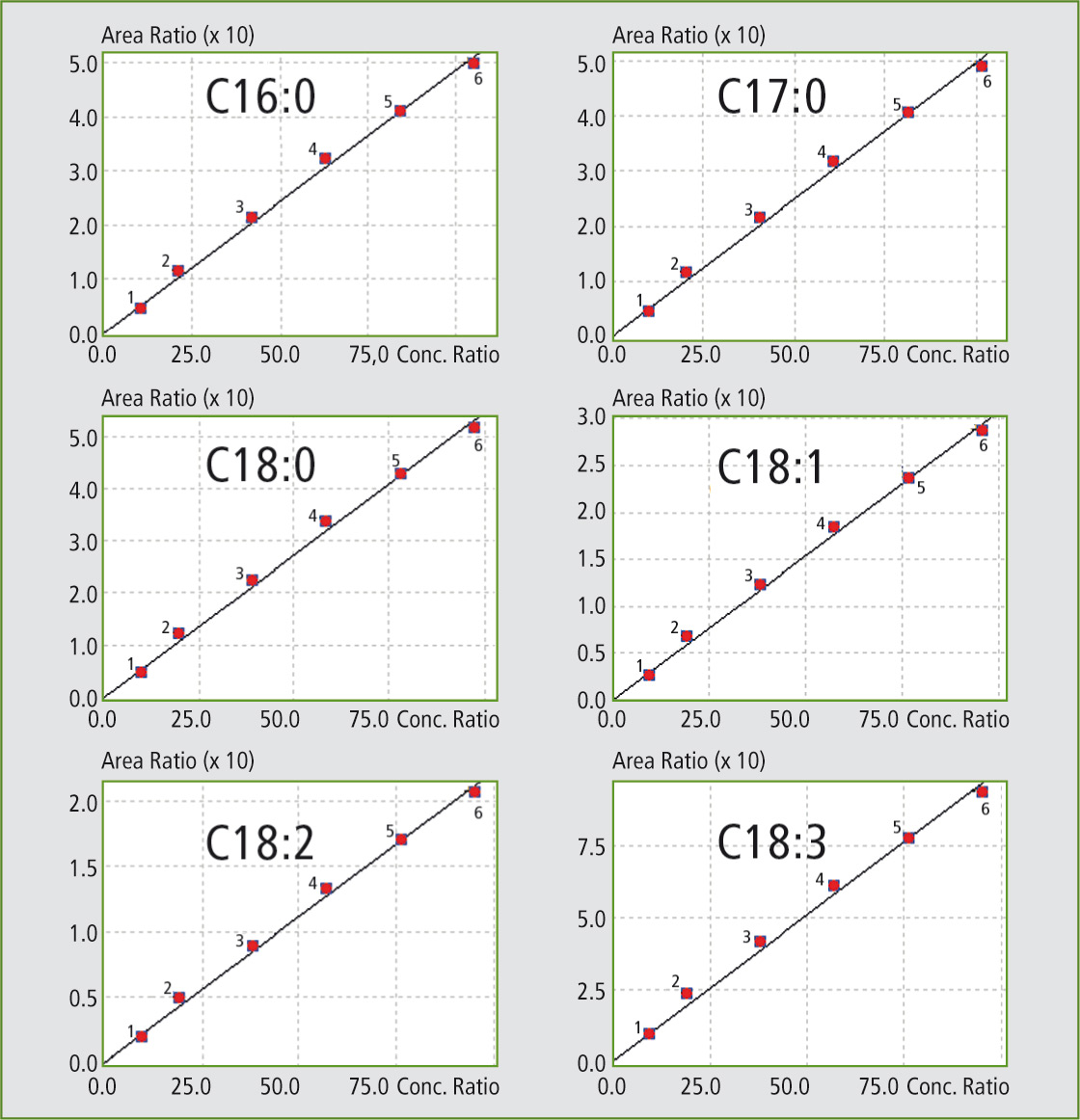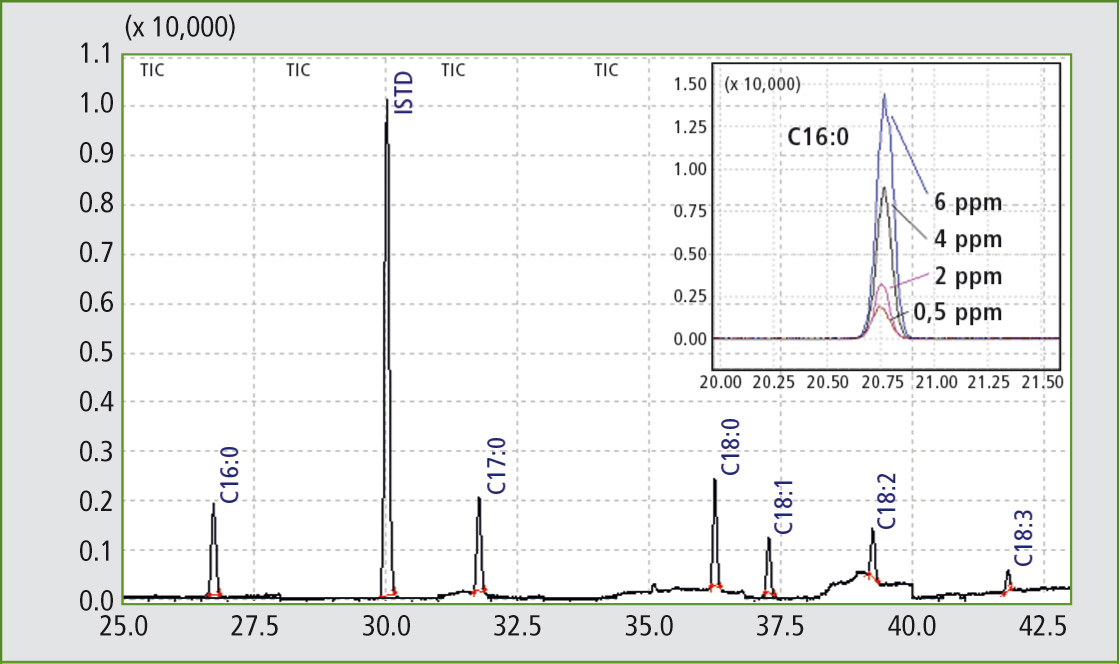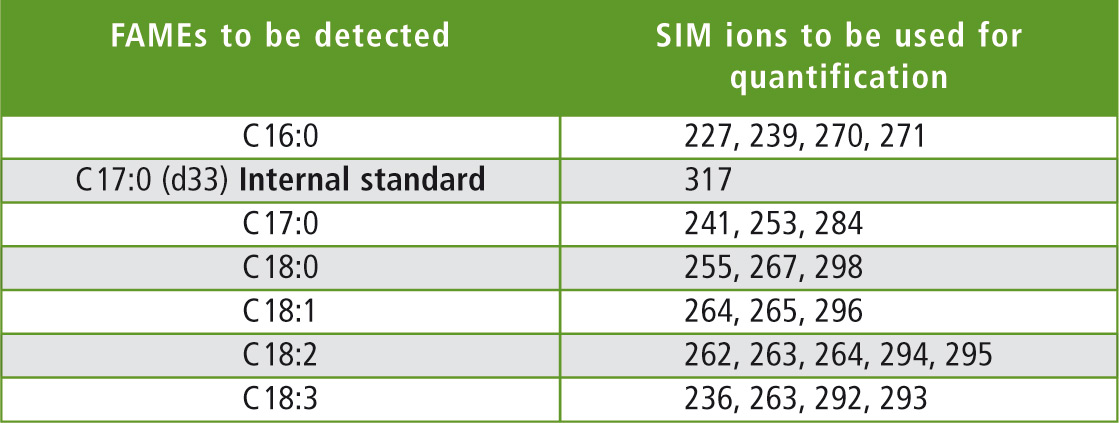FAMEs in aviation turbine fuel – a risk?
GC/MS analysis of Trace Fatty Acid Methyl Esters

Dimitris Georgantas*,
Athanasios Lintas**,
Konstantinos Kraniotis**, Panagiotis Kotsokolos**,
Manos Barmpounis*
*Applications Department of N.Asteriadis S.A., 31 Dervenion Str. & Poseidonos Str.
14451 Metamorfossi
Athens, Greece
email: mb@asteriadis.gr
**Motor Oil (Hellas) Corinth Refineries S.A.
Current and growing international governmental requirements to add fatty acid methyl esters (FAMEs) to diesel fuel have had an unintended side-effect of leading to potential FAMEs contamination of jet turbine fuel in multi-fuel transport facilities, with industry-wide concern. The contamination of aviation fuel with fatty acid methyl esters can arise through the use of multi-product pipelines or tanks for fuel supply and distribution. FAMEs can adsorb onto the surface of the pipeline, contaminating fuel that follows, including aviation turbine fuel (AVTUR).
There are two main issues with introduction of FAMEs content into diesel fuel that impact on jet fuel:
- FAMEs are active and tend to stick to metal or glass surfaces. This creates new risks of cross contamination where supply chains handle both jet fuel and biodiesel.
- FAMEs are non-hydrocarbon fuel components. But jet fuel specification states explicitly that only hydrocarbon components or approved additives are allowed.
The international jet fuel specifications (e.g. DEF STAN 91-91) limit FAME content to less than 5 mg/kg (mg/kg w/w). Levels above 5 mg/kg render the fuel out-of-specification.
Current methods for determining FAME content in aviation fuel use a polar type GC column for the separation with mass spectrometry (MS) for detection. The test sample of AVTUR is run together with an internal standard on the GC-MS to separate the polar FAME relative to the non-polar hydrocarbon matrix of the jet fuel and any mineral diesel contamination. Due to natural background of high-end naphtha components present in some samples, complete separation is not possible and a multiple selective ion monitoring (SIM) is performed. The ions used in the SIM method are indicative of the FAMEs and not the background hydrocarbon matrix of the fuel, therefore distinguishing FAMEs from hydrocarbon aviation fuel.
Experimental
The analysis was performed on a Shimadzu GCMS-QP2010 SE with a split/splitless injector. A 1.0 µL splitless injection introduced the standards and the samples with the aid of an AOC-20i autosampler and chromatographic separation was achieved on a 60 m x 0.25 mm Øi x 0.50 µm HP-INNOWAX column.
Detailed instrument parameters are presented below:
Instrumental conditions
GC oven temperature programme
Initial temp 150 °C and hold for 5 min.
Ramp at 12 °C per min until
200 °C and hold for 17 min.
Ramp at 3 °C per min until
252 °C and hold for 6.5 min.
Total run time: 50 min.
Sample injection
Splitless injector, temperature 260 °C.
Sample volume 1 µL.
MS Conditions
Ion source temperature: 200 °C
Interface temperature: 255 °C
Detector Voltage: 0.83 kV
SIM measurement:
See table 3
Procedure
The experimental procedure was carried out according to IP 585/10. A stock standard solution of 1,000 mg/kg of FAMEs as well as a 1,000 mg/kg of internal standard (C17:0 d33) were prepared in dodecane. A 100 mg/kg working standard of FAMEs was then prepared as well as all standards derived from it according to table 1.
 Table 1: Volumetric dilutions for preparing standards in the range 0 – 100 mg/kg from the 100 mg/kg working standard
Table 1: Volumetric dilutions for preparing standards in the range 0 – 100 mg/kg from the 100 mg/kg working standard
Two calibration plots for each fatty acid methyl ester were used, covering the working ranges 0 mg/ kg to 10 mg/kg (using the 0, 2, 4, 6, 8, 10 mg/kg standards) and 0 mg/ kg to 100 mg/kg (using the 0, 20, 40, 60, 80, 100 mg/kg standards). The lower working range should be applied for all FAMEs present in any sample at less than 10 mg/kg. The 0 mg/kg to 100 mg/kg calibration range shall be applied for all FAME species present in any sample at greater than 10 mg/kg. In figure 1, a chromatogram of a 10 mg/kg standard of FAMEs is shown.
 Figure 1: Chromatogram of a 10 mg/kg FAMEs standards
Figure 1: Chromatogram of a 10 mg/kg FAMEs standards
Correlation coefficients of all fitted calibration curves were excellent as can be seen in table 2 and figure 2. The total FAME concentration is calculated by summing the concentrations obtained for the six specified FAMEs using the specified calibration ranges.
 Figure 2: Calibration curves of FAMEs at range of 10-100 mg/kg
Figure 2: Calibration curves of FAMEs at range of 10-100 mg/kg
 Table 2: Correlation coefficients of the calibration curve
Table 2: Correlation coefficients of the calibration curve
As a fixed volume of sample is injected, the density of the samples will vary and differ from the dodecane used to prepare the standards. A density correction factor is therefore applied to the concentrations calculated from the standard calibration according to with the equation:
Total FAME, mg/kg = (measured FAME, mg/kg) x (density of dodecane)/(sample density).
Quantitation as well as implementation of density correction factor was performed automatically by the GCMS solution program. Although the method requires a 0.5 mg/kg detection limit for each substance (signal to noise 10:1), the instrument achieved much higher sensitivities (signal to noise from 50 to 200:1 depending on the substance) with a low detector voltage (0,83 kV) as can be seen in figure 3.
 Figure 3: Chromatogram of a 0.5 mg/kg spiked aviation fuel and overlay chromatograms of 0,5 – 6 mg/kg of C16:0
Figure 3: Chromatogram of a 0.5 mg/kg spiked aviation fuel and overlay chromatograms of 0,5 – 6 mg/kg of C16:0
 Table 3: SIM measurement
Table 3: SIM measurement
Conclusions
The Shimadzu GCMS-QP2010 SE was proven to be an excellent platform for the determination of FAMEs in aviation turbine fuels according to the IP 585 test method. The method showed excellent linearity at both high and low concentration levels as well as high sensitivity even with low detector voltage. All method parameters, internal standard calibration curves and density correction factor were successfully implemented in the GCMS Solution software, allowing automatic quantification of the samples. Finally, this method has been successfully implemented in Motor Oil (Hellas) Corinth Refineries S.A., one of the largest petroleum companies in Greece and to our knowledge the only Greek laboratory performing it.

References
[1] IP 585:2010, Determination Of Fatty Acid Methyl Esters (Fame), Derived From Bio-Diesel Fuel, In Aviation Turbine Fuel – GC-MS With Selective Ion Monitoring/Scan Detection Method, The Energy Institute, London, UK
[2] JIG (Joint Inspection Group), Bulletin No 21, November 2008, www.jigonline.com
[3] Ministry of Defence, Defence Standard 91-91, Issue 6, April 2008, UK Defence Standardization